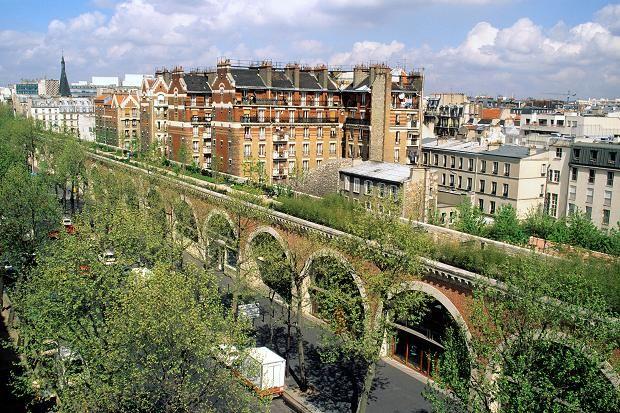
A green walkway was built on a former railway line. In the early 1980s, the Bastille station was demolished to make way for the Opéra Bastille. The construction of the green promenade began in 1988 and six years later the entire route was laid out. Along the route of approximately 5 kilometres from the city centre to the Périphérique, the line changes from elevated railway tracks to a tunnel to a railway zone at the ground level. Each of these locations was given its own green layout: a ‘classic’ park and promenade on the elevated tracks, with shops and galleries in the viaduct beneath; a walk between the tunnel walls with their original, ‘wild’ vegetation, still largely intact; to a brownfield and railway remnants at the end of the route. Promenade Plantée blew new life into the neighbourhoods it passes through, and closed façades were fitted with glass fronts. The walkway was renamed the Coulée verte René-Dumont in 2014. Due to its length, it is an important part of the ecological structure of this part of Paris. The project inspired several cities to start their own green transformations of disused railway lines, a famous example being the High Line in New York.
-Paris (FR) 1988–1997
-Patrick Berger, Jacques Vergely, Philippe Mathieux
more info: Paris info monument